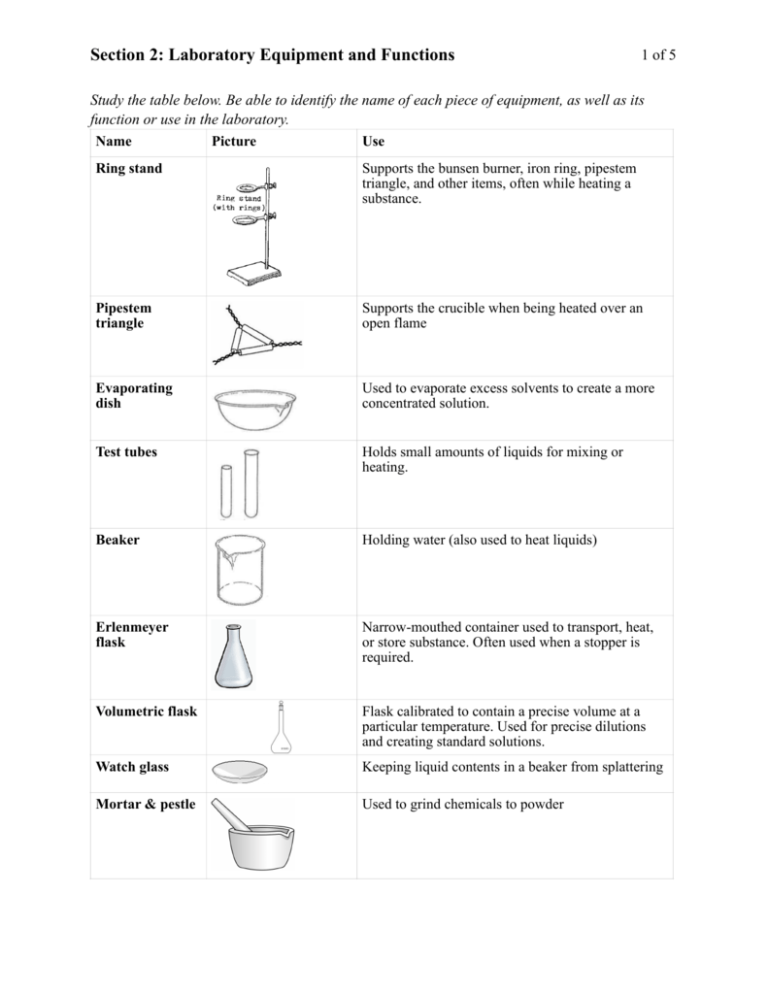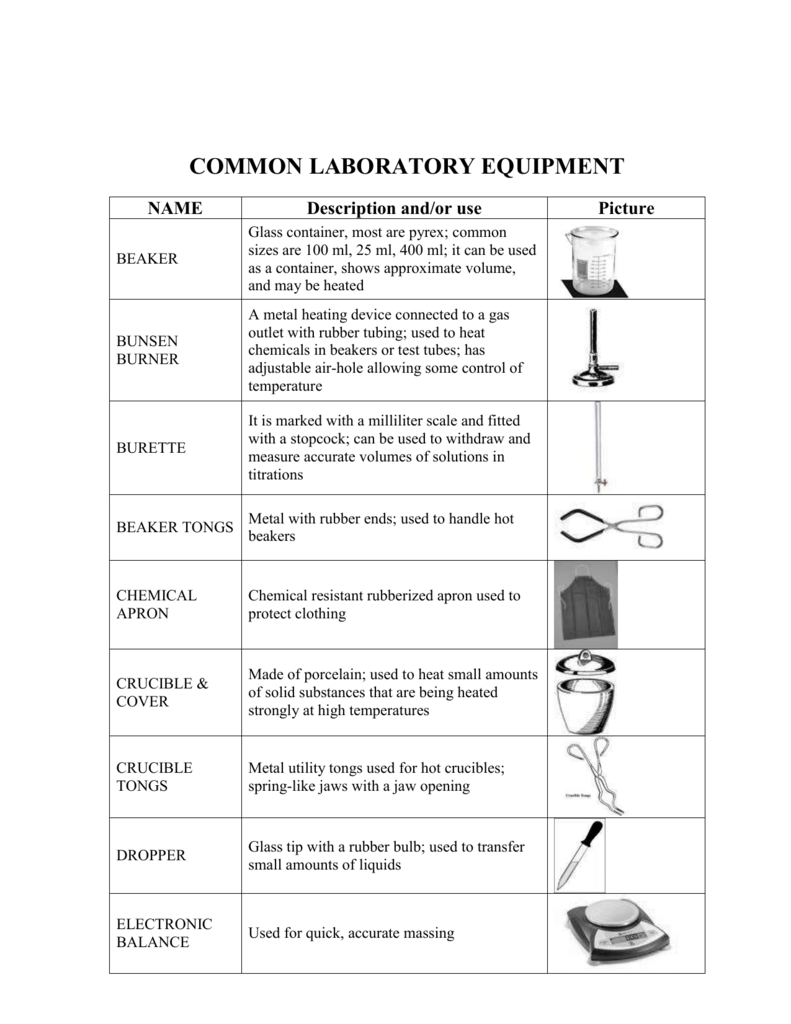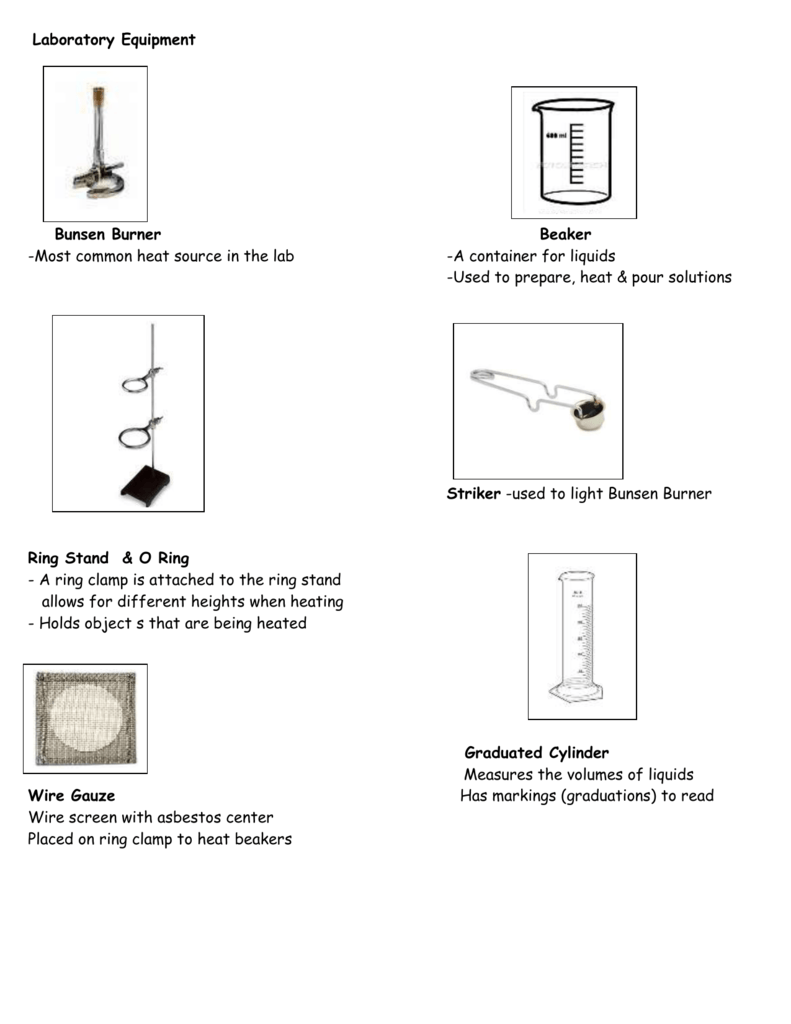Which Laboratory Tools Are Useful When Heating a Liquid
Test tubes beakers and pipettes among other things are used to hold small amounts of liquid in a science lab. Speaking of heating things in the lab there are a few handy pieces of equipment that serve this purpose.

Section 2 Laboratory Equipment And Functions
Used to draw liquids into a pipe.

. CRUCIBLE TONGS Used to transfer a hot crucible insideatop the curve at the end of the tongs. 1500 watts 115 volts. Ideal for heating liquids of all types in laboratory and industrial use Heating element is polished Type 316 stainless steel Design permits hanging over edge of vessel Elements are contained in coil section to concentrate heat at bottom of vessel Risers are unheated.
Which lab equipment tool would you use to measure approximately 50 mL of salt water. Using the proper laboratory equipment for their intended purpose is essential when conducting experiments for your safety and the safety of others. Which lab equipment tool would you use to heat a small amount of liquid over a Bunsen burner.
Used to evaporate a liquid to heat small portions of a substance Often used to cover beakers with NaOH to avoid excess reaction with the CO 2 in the atmosphere. Crucible with lid Crucible are used in the laboratory to contain chemical compounds when heated to extremely high temperatures. Test tubes Holds small amounts of liquids for mixing or heating.
Beakers They are specifically used to hold mix stir and heat liquids. First is the Bunsen burner developed by. Beaker Holding water also used to heat liquids Erlenmeyer flask.
Lab Planning Tools Made Easy. What do you use for heating Small amounts of liquid. The flat bottom of a beaker makes it easy to place on flat surfaces such as a lab bench or a hot plate.
Laboratory Tools and Apparatuses Tools include beakers microscopes tweezers hot plates lasers volt meters test tubes Erlenmeyer flasks thermometers test tube racks Bunsen burners. Generally youd use a heat block. Sand-baths are convenient for heating dishes and other round-bottomed utensils but they are dirty things at best and unsuited to the analytical laboratory.
Lab Equipment Last updated. For separating layers of immiscible liquids or for dropping liquids. General Purpose Water Baths.
Most also have a small spout or beak to aid pouring. Recirculating Thermostats Heating Cooling. These funnels are very useful as they minimize the chances of waste due to spillage.
A liter beaker will be accurate to within about 100 ml of liquid. A thermometer is often used to monitor the temperature of the bath and is used to approximate the internal temperature of liquid in a flask the bath is often slightly hotter than the liquid in the flask. To heat the bottom part while keeping the neck cool simply tilt the tube.
Used to pour liquids into containers with small openings or to hold filter paper. The spout makes it easy to pour liquids into other containers. Test tube clamps or utility clamp.
This common laboratory equipment is well-known in each household. Ring stand iron ring wire gauze. I guess this all with which one carry out heating in laboratory experiment.
Which lab equipment tool would you use to drop small quantities of isopropyl alcohol into a test tube. Holding many test tubes filled with chemicals. It measures a liquid substance and allows one to transfer liquids from bottles with small necks into a new container.
Water Bath Fluids Conditioners Additives. Which lab equipment tool would you use to heat a small amount of liquid over a Bunsen burner. The funnel as we know is equipment to pour solvents and liquids into a narrow mouth bottle.
Microburners are also useful for heating boiling tubes and test tubes sealing the ends of melting point tubes making micropipettes for chromatography and bending the ends of Pasteur pipettes for special purposes. 43 rows separatory funnel. Energy Airflow Data.
Mixing a small amount of chemicals together. Triangle and other items often while heating a substance. A heating lamp test tube boiling flask if you are heating liquid is in large quantity stand to fix flask test tube.
Clamps or tongs are commonly used to hold the tubes neck steady while its being processed. Small quantities of liquids can be heated in test tubes using a Bunsen burner or an alcohol burner. Water-Baths and Air-Baths The water-bath is much used for evaporations.
Heat Guns Heat guns are inexpensive tools for delivering strong heat in a more flexible manner than other heating methods. This may allow vapors to condense on the walls. A simple container for stirring mixing and heating liquids commonly used in many laboratories and are generally cylindrical in shape with a flat bottom.
Heating contents in a test tube. In the lab one often needs transparent funnels to pour solvents powders and other liquids into other containers. This small glassware with a rubber end is used in medicine and laboratories.
Pipestem triangle Supports the crucible when being heated over an open flame Evaporating dish Used to evaporate excess solvents to create a more concentrated solution. Finally the wide opening makes it easy to add materials to the beaker. A cone-shaped container with neck so you can hold the flask or attach a clamp or use a stopper.
Crucibles are available in several sizes and typically come with a correspondingly-sized lid.

Common Laboratory Apparatus And Their Functions O Level Secondary Chemistry Tuition

No comments for "Which Laboratory Tools Are Useful When Heating a Liquid"
Post a Comment